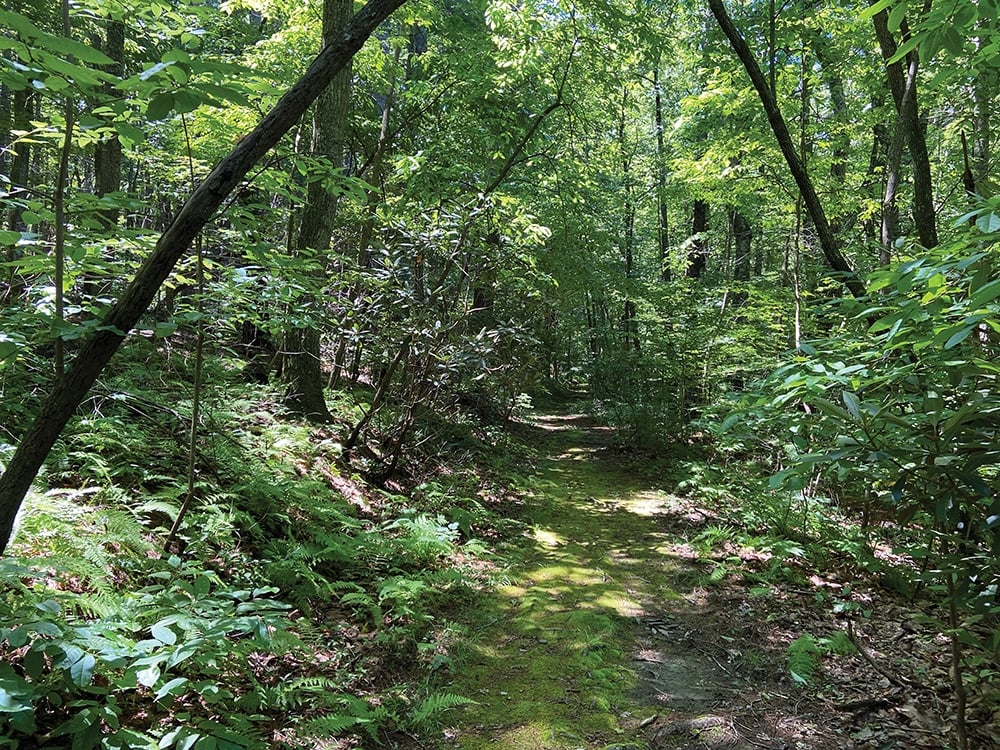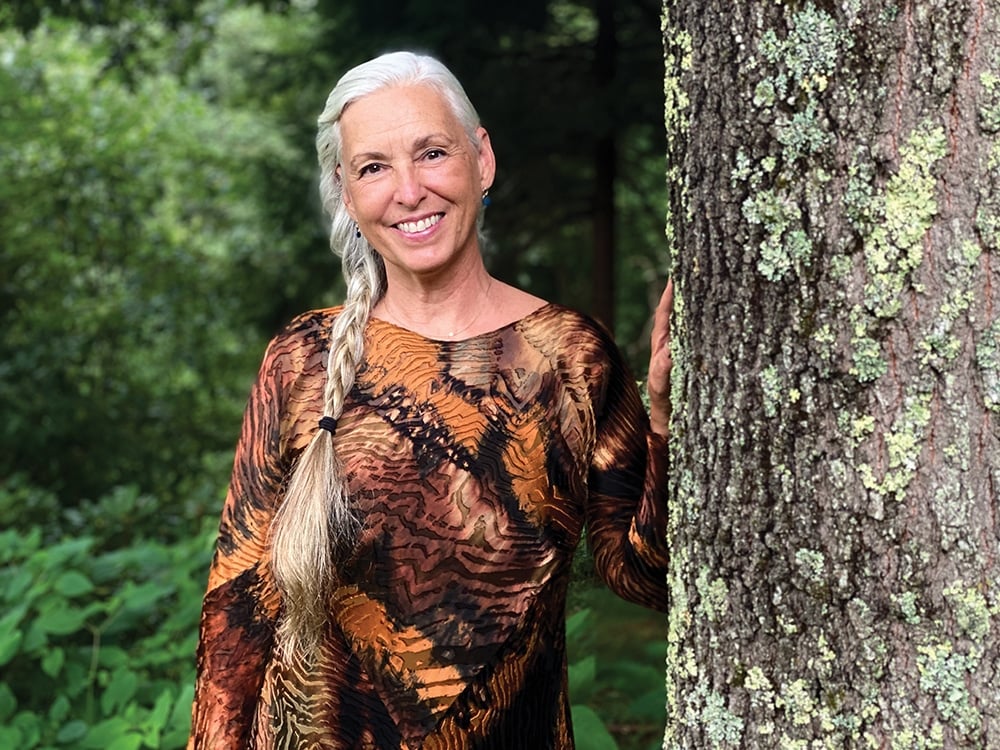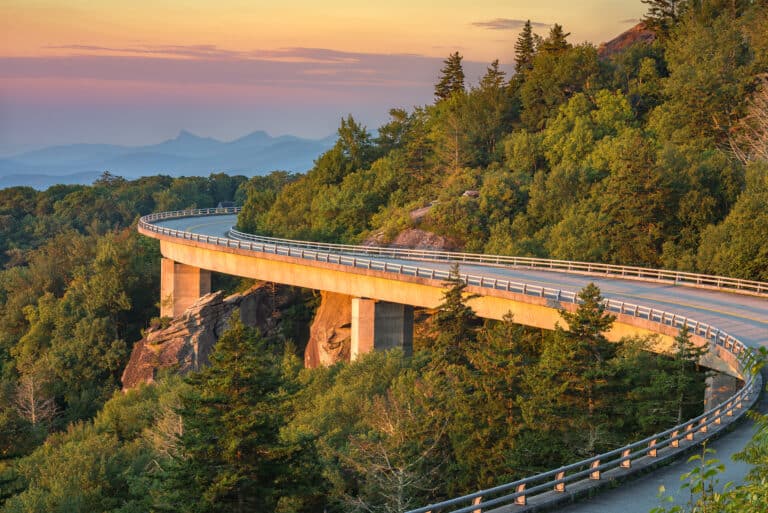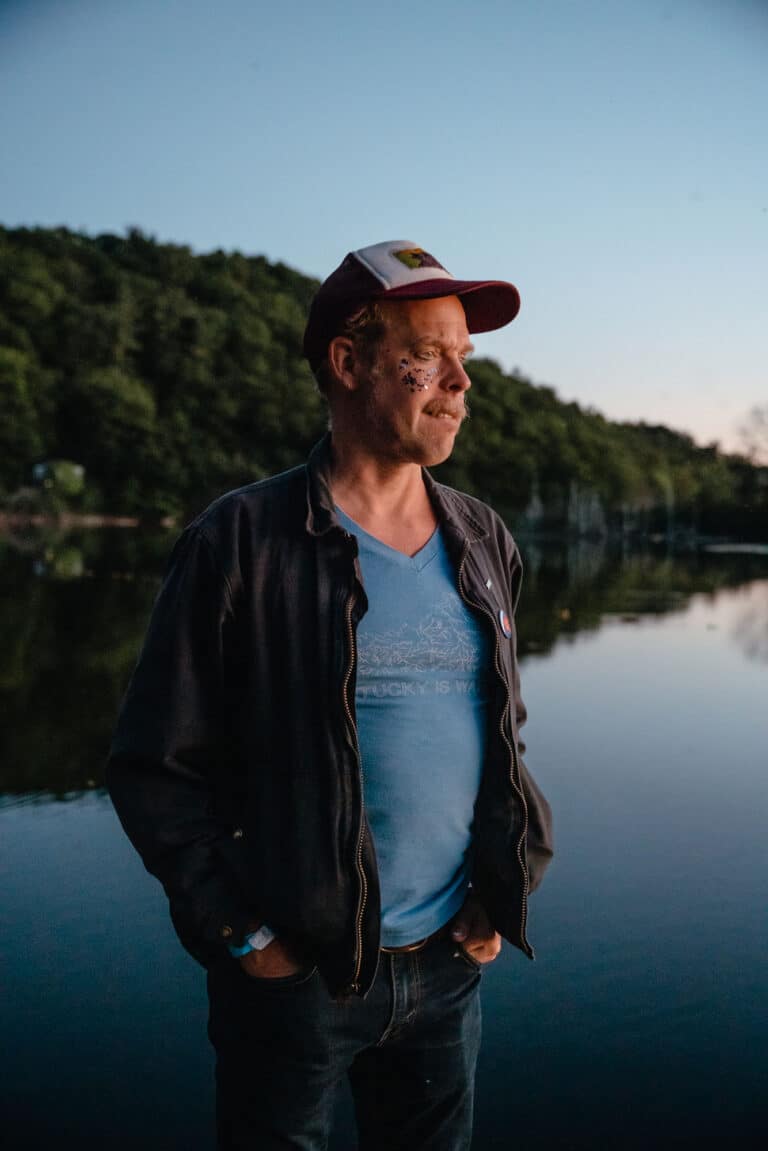Restoration efforts create a wooded sanctuary just outside Asheville’s city limits
Shelli Stanback first stood on the grounds of OM Sanctuary holding her small daughter two decades ago with no idea that she would one day be called to save this urban forest from the chopping block of development.
Back then it was home to the Richmond Hill Inn. But in 2011, with the property facing bankruptcy foreclosure after suspected arson engulfed the historic Pearson Mansion, Stanback formed a nonprofit to purchase the surviving buildings and 54 acres to create North Carolina’s OM Sanctuary, a retreat center whose mission is to inspire healthy lifestyle practices through holistic education and connection with nature. “I felt that Asheville was becoming fragmented,” Stanback says. “I thought the community would benefit from a center where people could learn from and immerse themselves in nature.”
The mansion that burned was famous for housing a 5-star restaurant run by a chef who once worked for film legend Robert Redford. But what Stanback acquired was far from glamorous. A pile of rubble, neglected buildings, tin cans left by squatters, and a forest strangled by invasive species. It’s the forest that’s become central to what OM is and plans to be.
In 2015, Stanback worked with the Southern Appalachian Highlands Conservancy (SAHC) to place an easement on 42 acres containing cove and oak forest, low mountain pines, and mixed hardwoods, ensuring that this land just three miles from downtown Asheville will remain intact forever.
“Natural places are essential for human health,” says Stanback, who grew up playing outside in Minnesota. “Once they are lost to development, they are gone forever. We must preserve them now for our sake, and for the sake of the future.”
Conservation of the forest not only provides carbon sequestration along the I-26 corridor, it helps protect tributary streams of the French Broad River Watershed from sources of sedimentation and other pollution. Carl Silverstein, SAHC’s executive director says, “It’s a rare gem containing an uncommon cluster of natural features near Asheville’s urban core. In addition to providing ecosystem services, it preserves a scenic view seen by many people every day: recreational users of the French Broad River and everyone who drives past it.”
While rampant development for short-term economic gain continues in surrounding areas, Stanback keeps her long-range vision of preservation in mind. “With few urban open spaces remaining near Asheville,” she says, “protecting the forest with a conservation easement was the clear, sustainable choice.” She takes forest stewardship as seriously as her role as OM’s Founder and CEO. In 2019, OM partnered with the Nature Conservancy and the Asheville Fire Department to complete phase one of a prescribed burn to help protect against forest fires while reinvigorating the woodlands. Despite all she’s accomplished, Stanback is quick to credit others, whether it’s her small staff enduring unprecedented events, her husband Brad for his insights into land restoration, or the people at MountainTrue for the work they’ve done to control non-native invasive plants.

“Goodness,” Thoreau said, “is the only investment that never fails.” And those who visit to attend wellness programs or stay in OM’s 25 rooms and cottages benefit from close proximity to the major dividend of Stanback’s efforts: an evolving forest with mossy paths bordered by ferns, mountain laurel, and rosebay rhododendrons leading past American beech and holly to reach ephemeral pools and habitat for salamanders. On a plateau overlooking the French Broad River, a former heap of broken bricks has been removed to make way for Prayer Rock Circle, a beloved spot favored for sacred ceremonies and where a traveling Buddhist recently spent several weeks offering blessings in the wake of Covid-19 closures.
Just before the pandemic struck, Prayer Rock Circle was also visited by a group of children introduced to OM through Muddy Sneakers, an organization that brings fifth-grade students onto protected lands with the goal of introducing them to the wonders of the natural world. OM’s master plan includes more such synergistic alliances, as well as self-directed hermitage retreats for individuals who wish to take a break from technology and the frenetic pace of the outer world.
While the region abounds with many opportunities to test one’s physical limits on more strenuous ascents, OM’s forest is staking out its own unique territory, attracting visitors who, for a variety of reasons, wish to spend time in nature without necessarily needing to set a speed record or bag the highest peak. Mildred Barya, a Richmond Hill neighbor who first visited OM for a wellness retreat, says, “Walking the OM trail has taught me to become fully human. At first I thought I was just getting exercise, fresh air… but then realized that I was becoming more observant, not because I was expecting to chance upon a bear or mother turkey with her poults, but other aspects of my life were changing as well. I would return to work with greater focus and attention. I started to hear sounds I had not heard before, to see clearly, and to feel a deep, comforting knowing about certain issues I’d been pondering. I thank the trail for bringing into my life a new level of appreciation, joy, and clarity.” OM’s trail isn’t for outwardly visible rewards. It’s a place simply to be.
One program OM offers to help guests do just that is forest bathing (the Japanese practice of shinrin yoku), led by Wellness Director Mary Liske. Forest bathing not only lowers heart rate and boosts the immune systems; it’s been proven to reduce stress, boost creativity and increase feelings of happiness. A daily dose of just half an hour in nature works wonders. EPA studies have shown that the average American spends more than 90% of their time indoors. And as we’ve learned these past months when we’ve been denied access to parks, never have we needed nature so much. “People feel overbooked and too busy,” Stanback says. “We want to help them to unplug and slow down.”
Stanback often speaks of the symbiotic relationship between humans and nature, and she hopes to cultivate a similar symbiosis between OM Sanctuary and the community it’s being created to serve. During OM’s temporary closure forced by Covid-19, Stanback is visibly moved each time even the smallest donation arrives to help with trail maintenance and ongoing forest restoration. When the sanctuary reopens in mid-September, Stanback looks forward to involving those interested in the many facets of OM, be they cultural evenings, educational events, learning seminars around bee pollination and food gardens, or the creation of more mind-body programs to benefit heart and soul.
“Whole people,” she says, “are needed to create a whole planet.”
Indeed, if we’ve learned anything during the pandemic, it’s that being closer to nature is more crucial than ever. With limited access to parks and beaches these last several months, it’s become abundantly clear that we are less human without it.
When seeing firsthand this forest that Stanback has saved, one can’t help but view OM’s accomplishment as something of a sublime protest to benefit all. Her action is perhaps quieter than many of the turbulent conversations swirling about our country right now, but that does not make it less profound. As so many urban forests vanish, Stanback stands her ground firmly as if to say, “I nurture this forest so that the forest may nurture all.”
The week we met, Stanback, still adjusting to the many challenges brought on by pandemic closures, wasn’t as daunted by revenue losses and uncertainties as she was excited about OM’s future and its many possibilities to serve.
In the midst of many financial and logistical hurdles still to clear during this worldwide cosmic reset, Stanback not only remains undaunted; she also takes a moment to embody all that OM is when she celebrates a fawn being born in OM’s forest one Sunday in June. The tiny deer seems not only a good omen, but also serves as inspiration to strengthen Stanback’s resolve to be even more certain of her work during uncertain times.
That fawn will hopefully give birth in OM’s forest next year. And one day in the distant future, a child first introduced to nature in the OM forest will stand holding her own daughter just as Stanback did long ago in these wondrous woods so close to town.








